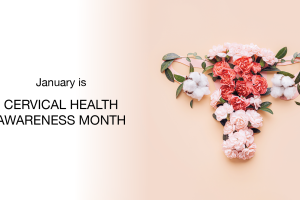
September is National Food Safety Education Month, a perfect time to focus on the importance of safe food preparation, storage, and handling. By following simple food safety tips, you can protect your family from foodborne illnesses and ensure that your meals are both safe and healthy.
Why Food Safety Matters
Foodborne illnesses can be serious and sometimes life-threatening. They are caused by consuming contaminated food or beverages, and can affect anyone, but are especially dangerous for young children, older adults, pregnant women, and individuals with weakened immune systems. By practicing good food safety habits, you can reduce the risk of foodborne illnesses in your home.
Safe Food Preparation
- Wash Your Hands: Always wash your hands with soap and water for at least 20 seconds before and after handling food, especially raw meat, poultry, seafood, and eggs.
- Clean Surfaces and Utensils: Use hot, soapy water to clean cutting boards, knives, countertops, and other utensils after preparing each food item.
- Separate Raw and Cooked Foods: Keep raw meat, poultry, seafood, and eggs separate from other foods to prevent cross-contamination. Use separate cutting boards and plates for raw and cooked foods.
Safe Food Storage
- Refrigerate Promptly: Refrigerate perishable foods within two hours of purchase or preparation. If the temperature is above 90°F (32°C), refrigerate within one hour.
- Store Food Properly: Keep raw meat, poultry, and seafood in sealed containers or plastic bags to prevent their juices from contaminating other foods. Store eggs in their original carton in the refrigerator.
- Use and Label Leftovers: Store leftovers in airtight containers and label them with the date. Consume leftovers within three to four days.
Safe Food Handling
- Cook to Safe Temperatures: Use a food thermometer to ensure that foods are cooked to safe internal temperatures. For example, cook poultry to 165°F (74°C) and ground meat to 160°F (71°C).
- Avoid the Danger Zone: Keep hot foods hot (above 140°F or 60°C) and cold foods cold (below 40°F or 4°C). Bacteria grow rapidly in the “danger zone” between 40°F and 140°F.
- Thaw Foods Safely: Thaw frozen foods in the refrigerator, in cold water, or in the microwave. Do not thaw foods on the counter, as this can allow bacteria to grow.
Avoiding Foodborne Illnesses
By following these food safety tips, you can reduce the risk of foodborne illnesses and keep your family healthy. Remember to wash your hands, clean surfaces and utensils, separate raw and cooked foods, refrigerate promptly, store food properly, cook to safe temperatures, avoid the danger zone, and thaw foods safely.
Primary Care – Family
Regular wellness visits with your primary care provider, such as a family doctor, are essential for maintaining overall health and well-being. Your family doctor can provide guidance on healthy eating, food safety, and other important health topics. Open communication with your doctor can help you make informed decisions about your family’s health and ensure that you are following safe food practices.
National Food Safety Education Month is a great opportunity to focus on keeping your family safe from foodborne illnesses. By practicing safe food preparation, storage, and handling, you can protect your family and enjoy healthy, delicious meals together. For more information on food safety, visit the CDC’s Food Safety page and the FDA’s Safe Food Handling page.
Want to get a head start on your health? Call MHEDS at 814-453-6229 (Peach Street) or 814-616-7730 (John F. Kennedy Center).
Our health information does not replace the advice of a doctor. Please be advised that this information is made available to assist the public in learning more about their health. MHEDS’ providers may not see and/or treat all topics found herein.
Sources
- Centers for Disease Control and Prevention (CDC). (2021). Food Safety.
www.cdc.gov/foodsafety/index.html - U.S. Food and Drug Administration (FDA). (2021). Safe Food Handling.
www.fda.gov/food/buy-store-serve-safe-food/safe-food-handling








